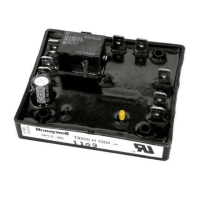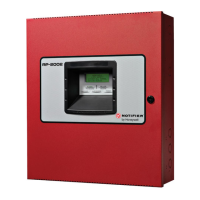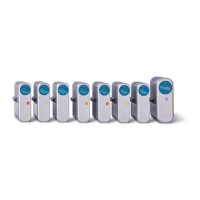3. B. (9) Yaw Channel Functional Operation (See Figure 261, sheets 1 and 2.)
The yaw axis of the autopilot provides directional stability (yaw
damping) and directional control for turn coordination. The yaw
axis of the autopilot receives sensor information from the IRS and
the DADC.
The IRS
supplies the following information through the
ASCB.
w Yaw rate
. Roll rate
. Pitch attitude
. Roll attitude
. Normal acceleration
● Longitudinal acceleration
s Lateral acceleration
The DADC supplies the following information through the ASCB.
. Indicated airspeed (IAS)
● True airspeed (TAS)
. Altitude rate (VS)
The above inputs from the IRS and the DADC are all combined in the
FZ-820’S rudder command processor.
(See Figure 261, sheet 2.) The
rudder command processor will determine the proper rudder deflection
to maintain directional stability and control.
Yaw
rate, true airspeed, roll attitude, and lateral acceleration are
the primary controlling inputs for the yaw axis. The rudder command
processor looks at yaw rate and computes the control response
necessary to bring the yaw rate of the aircraft to zero.
True
airspeed,
roll attitude, and lateral acceleration combine to provide
turn coordination.
The remaining inputs to the processor are
secondary and aid in further optimizing yaw control.
The yaw axis may be engaged by pressing the YD pushbutton on the
aircraft control panel. The yaw axis is disengaged by also pressing
the same YD button.
The yaw axis will automatically be engaged when
the autopilot is engaged. The autopilot cannot be operated without
the yaw damper.
Upon engagement, if the rudder command processor is satisfied, its
output will be zero and the rudder will remain centered.
When the
rudder command processor detects a need for yaw correction, it will
route its command signal through an easy on circuit. This easy on
function allows the command processor signal to gradually be applied
to the rudder when the yaw damper is engaged. In the
event that the
processor were to command a large displacement at YD engagement, the
pilot would have sufficient time to react and disengage the yaw
damper.
The yaw rate command is then adjusted to the proper gain
and rate limited. The command is now changed from digital to analog
22-14-00
Page 298.143
Aug 15/91
Use or disclosure Of information On this page IS subject to the restrictions on the title page of this document.

